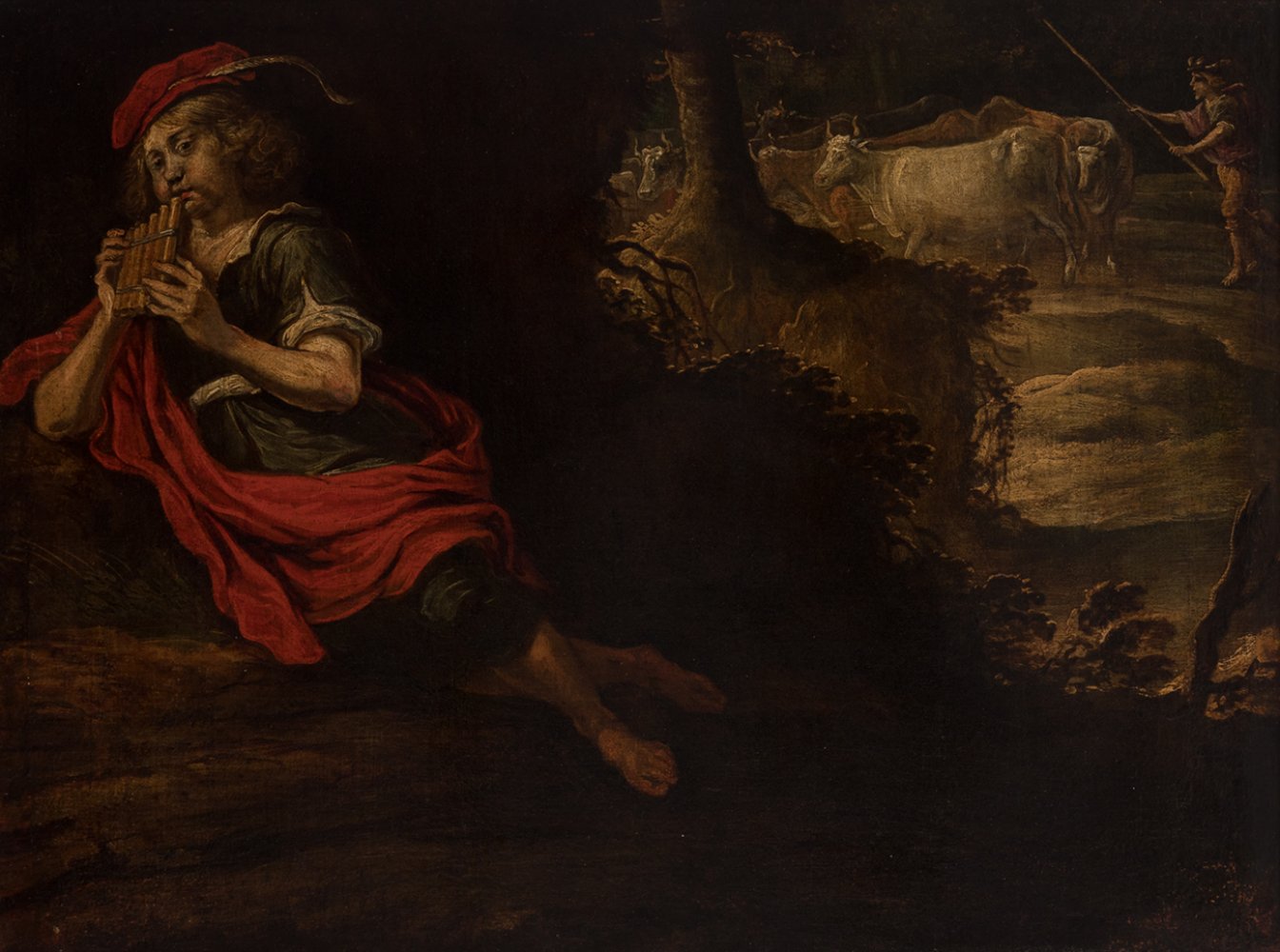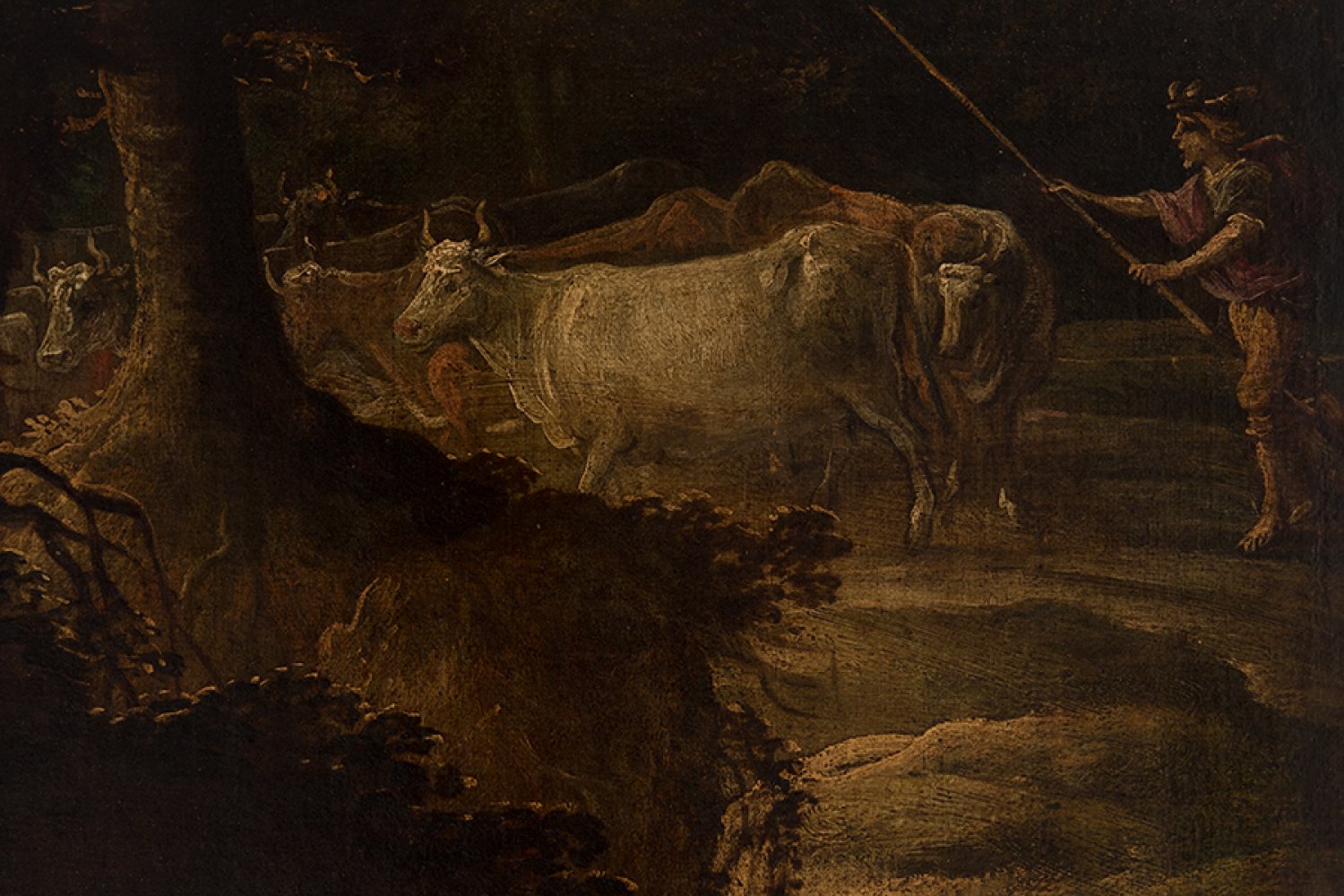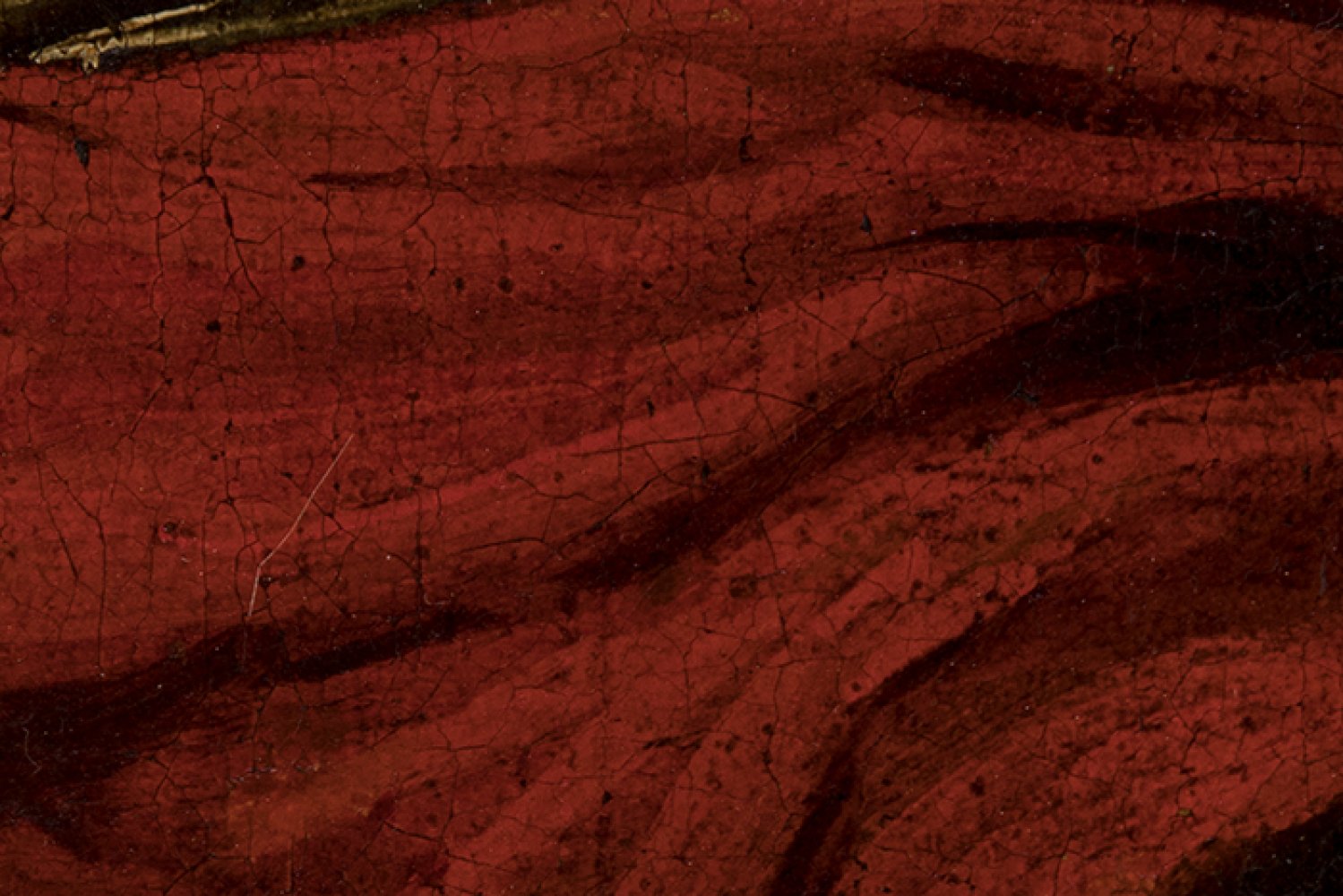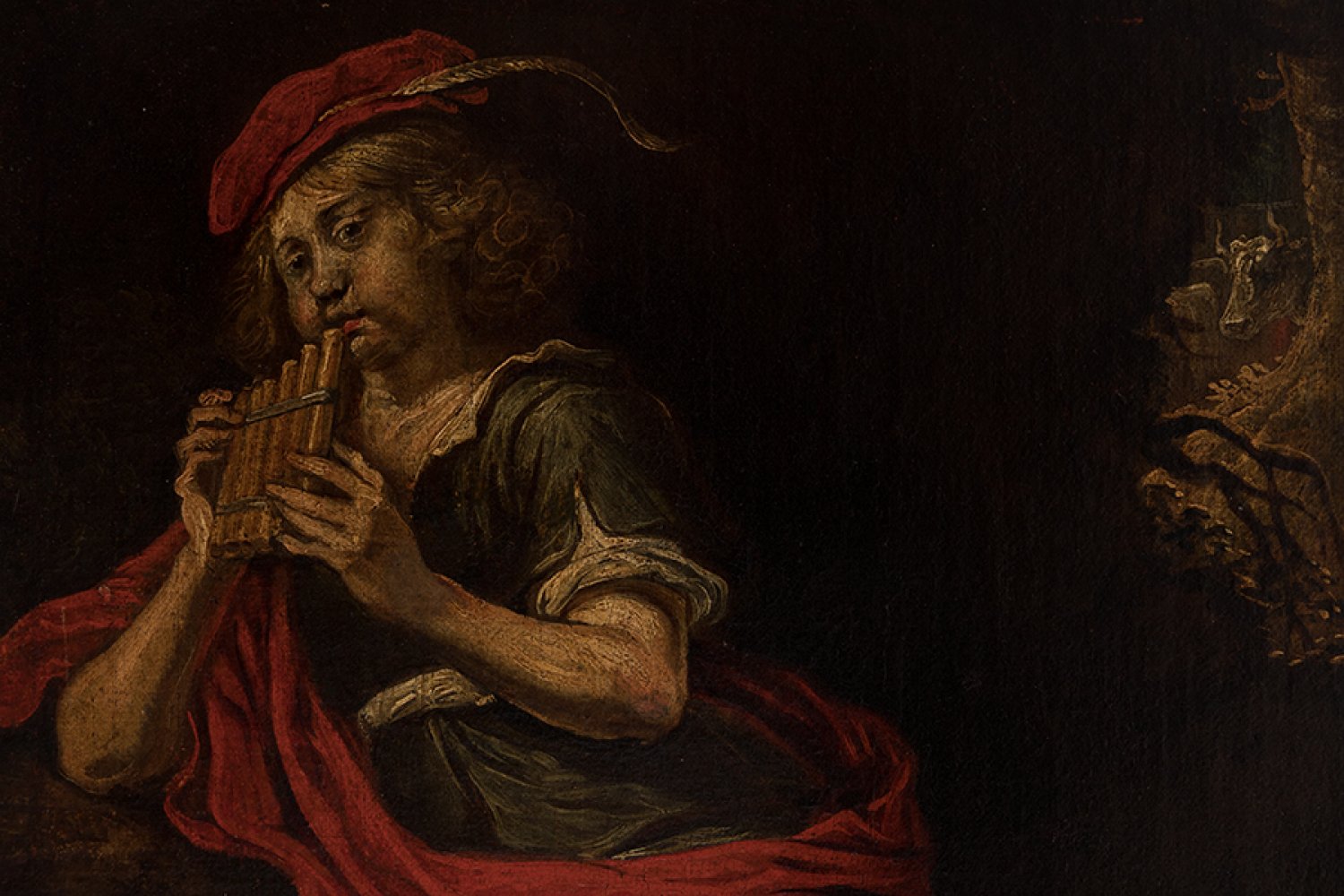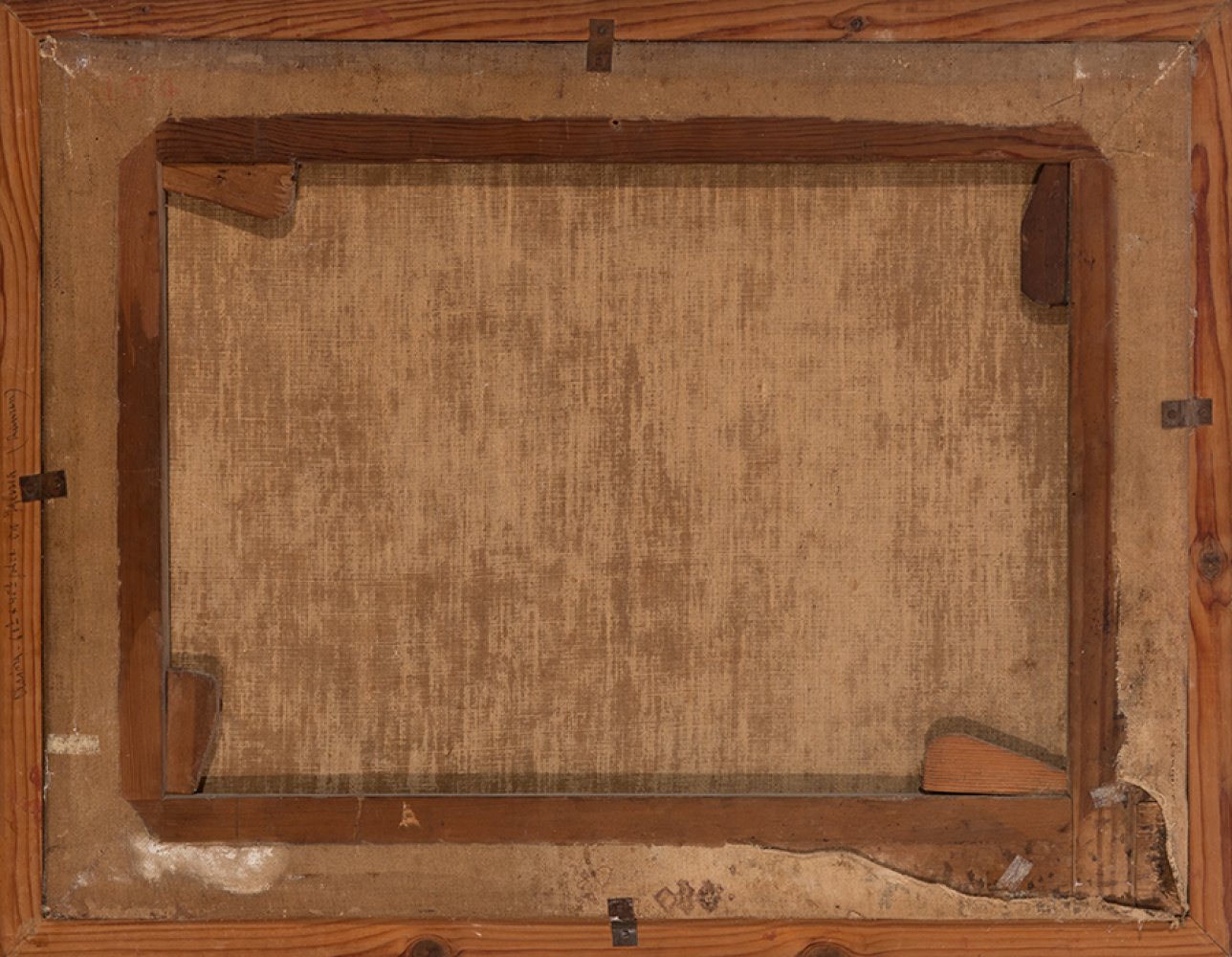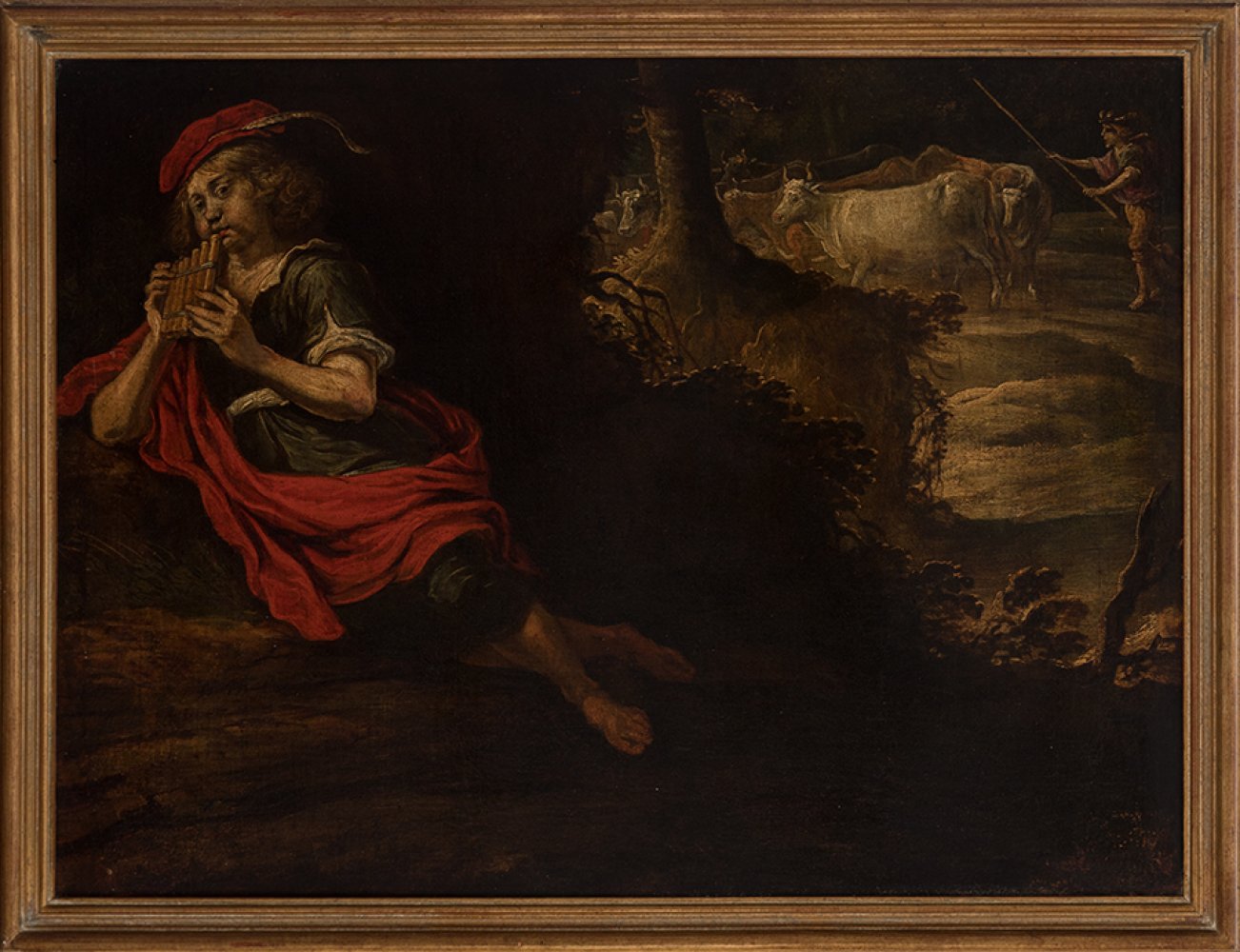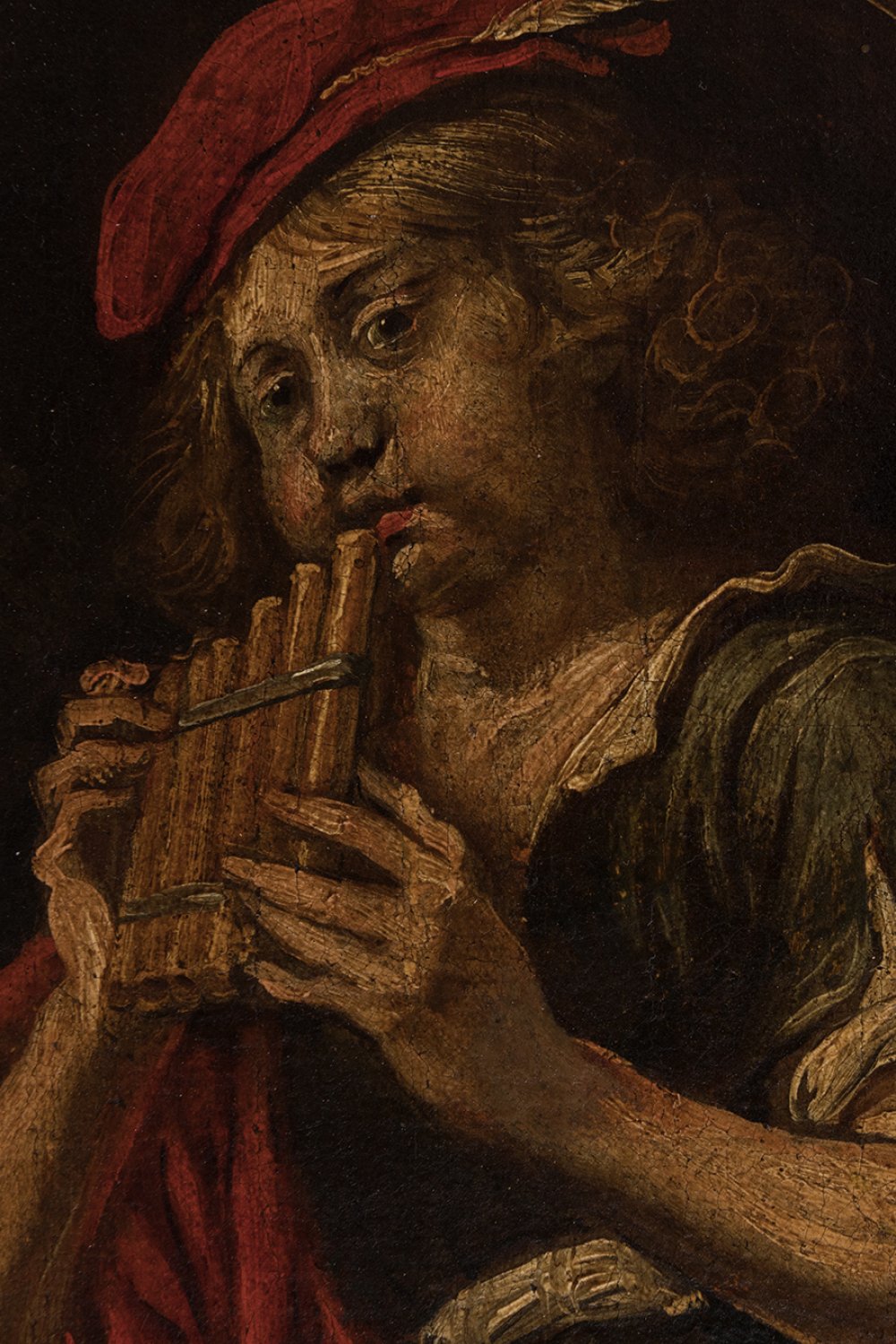60
Flemish school; Last third of the 17th century."Shepherd with pan flute".Oil on canvas. Re-framed.
"Shepherd with pan flute".
Oil on canvas. Re-framed.
Size: 45 x 60 cm; 69,5 x 50,5 cm (frame).
In this narrative scene, the author poses two independent images divided by two planes. In the main area, on the left, an elegantly dressed young man seems to be resting and enjoying playing the siringa, also known as Pan's flute. In the right area of the scene, a young man leads the cattle. These two images seem contrary to each other, as one reflects the hard work of the countryside, while the other character represents the idyllic life of the countryside. However, the introduction of Pan's flute is the key to understanding the scene, since in Greek mythology Pan was the god of shepherds and cattle.
While in the 17th century the demand for religious art for churches radically ceased in the northern provinces of what is now Holland, monumental art in the service of the Catholic Church flourished in Flanders, partly due to the necessary restoration of the ravages that the wars had caused in churches and convents. In the field of secular art, Flemish painters worked for the court in Brussels and also for the other courts of Europe, producing paintings with classical, mythological and historical themes that were to decorate brilliantly the Royal Sites of Spain, France and England. As a result, there was a proliferation of small and medium-sized works on a wide range of genres, painted by specialised painters who often collaborated on the same work. In this work the landscape shows artistic characteristics based on the 15th-century Netherlandish pictorial tradition, which developed artistically in later centuries. Thus, in the 12th century, the use of landscape as a background for works came to occupy a much more important place as an artistic element than that occupied by landscape in other schools of the same period. As far as the representation of narrative is concerned, the landscape of the Flemish Primitives plays an essential role, not only as the natural environment of the characters but also to separate and set the various episodes of the story narrated in the work. As for the imitation of nature, 15th-century Flemish painters sought to depict the countryside and cities of their native country in their religious landscapes in a realistic manner, detailing their flora with botanical precision and even giving an idea of the time of day and the season of the year in which the scene takes place, thus establishing a pictorial pattern that continued into the 17th century, as can be seen in the present painting. This special interest in depicting the landscape increased as the 16th century progressed, when a new type of landscape was developed and popularised for sacred scenes: the panoramic view.
"Shepherd with pan flute".
Oil on canvas. Re-framed.
Size: 45 x 60 cm; 69,5 x 50,5 cm (frame).
In this narrative scene, the author poses two independent images divided by two planes. In the main area, on the left, an elegantly dressed young man seems to be resting and enjoying playing the siringa, also known as Pan's flute. In the right area of the scene, a young man leads the cattle. These two images seem contrary to each other, as one reflects the hard work of the countryside, while the other character represents the idyllic life of the countryside. However, the introduction of Pan's flute is the key to understanding the scene, since in Greek mythology Pan was the god of shepherds and cattle.
While in the 17th century the demand for religious art for churches radically ceased in the northern provinces of what is now Holland, monumental art in the service of the Catholic Church flourished in Flanders, partly due to the necessary restoration of the ravages that the wars had caused in churches and convents. In the field of secular art, Flemish painters worked for the court in Brussels and also for the other courts of Europe, producing paintings with classical, mythological and historical themes that were to decorate brilliantly the Royal Sites of Spain, France and England. As a result, there was a proliferation of small and medium-sized works on a wide range of genres, painted by specialised painters who often collaborated on the same work. In this work the landscape shows artistic characteristics based on the 15th-century Netherlandish pictorial tradition, which developed artistically in later centuries. Thus, in the 12th century, the use of landscape as a background for works came to occupy a much more important place as an artistic element than that occupied by landscape in other schools of the same period. As far as the representation of narrative is concerned, the landscape of the Flemish Primitives plays an essential role, not only as the natural environment of the characters but also to separate and set the various episodes of the story narrated in the work. As for the imitation of nature, 15th-century Flemish painters sought to depict the countryside and cities of their native country in their religious landscapes in a realistic manner, detailing their flora with botanical precision and even giving an idea of the time of day and the season of the year in which the scene takes place, thus establishing a pictorial pattern that continued into the 17th century, as can be seen in the present painting. This special interest in depicting the landscape increased as the 16th century progressed, when a new type of landscape was developed and popularised for sacred scenes: the panoramic view.
7th September - Old Masters
Sale Date(s)
Venue Address
General delivery information available from the auctioneer
Setdart offers Worldwide shipping
PICK UP IN ROOM: You can come and pick up your lots in our offices (Barcelona, Madrid or Valencia). At the moment of the withdrawal, you will be able to accept the current conditions of the lot by means of a document that you will sign.
YOU CAN SEND ANOTHER PERSON TO PICK UP: This person must present a signed authorization that you can find in our web page by accessing from BUY AT SETDART- LOGISTICS-DOWNLOAD AUTHORIZATION DOCUMENT. You can also send an e-mail with the requested data in AUTHORIZATION DOCUMENT to admin@setdart.com
Important Information
25% buyer´s premium
21% buyer´s premium at www.setdart.com
Terms & Conditions
The maximum period to pay the lots is 7 working days. You can pay either via bank transfer or with credit card through our platform www.setdart.com (we only accept VISA or Mastercard).
BUYER´S PREMIUM: 22% Hammer price + 21% VAT from the buyer´s premium
If your piece has more than 100 years, our Ministry of Culture requires an export certificate in order for the piece to leave the country. Note that if the piece goes inside the EU, there is no cost for the export certificate. If the piece goes outside the EU, there is a cost for the export certificate. You can find more information in our Ministry of Culture website: https://www.culturaydeporte.gob.es/en/cultura/patrimonio/exportacionimportacion/exportacion/tasas.html
INQUIRIES: admin@setdart.com
Setdart guides you through the entire process, from the time of award to the day you receive your lot. Our logistics team will be happy to manage your transport, and will advise you on the best shipping method with professionals from the sector used to handling works of art and jewelry.
WE OFFER WORLDWIDE DOOR TO DOOR SHIPPING
PICK UP IN ROOM: You can come and pick up your lots in our offices. At the moment of the withdrawal, you will be able to accept the current conditions of the lot by means of a document that you will sign.
YOU CAN SEND ANOTHER PERSON TO PICK UP: This person must present a signed authorization that you can find in our web page by accessing from BUY AT SETDART-LOGISTICS-DOWNLOAD AUTHORIZATION DOCUMENT. You can also send an e-mail with the requested data in AUTHORIZATION DOCUMENT to admin@setdart.com
SETDART IS NOT RESPONSIBLE FOR THE STATE OF THE PARTS ONCE THEY LEAVE OUR FACILITIES. MRW SHIPMENTS: Once the payment is made, your lot will be packed for shipment, the logistics department will send you an e-mail notifying you of the day it leaves our warehouse, changes of address cannot be made after receiving this e-mail.
INSURANCE INCIDENTS: Coverage for the value of the auction up to 3000 ? per shipment, if the value of the auction is higher, Setdart will send you a quote including the additional insurance. The insurance company WILL NOT BE RESPONSIBLE FOR THE SHIPMENT THAT EXCEEDS THAT AMOUNT AND IS NOT FULLY INSURED. MRW INCIDENTS: Maximum notification 48 hours after receipt, after which the insurance company WILL NOT BE RESPONSIBLE AND NO CLAIMS WILL BE ACCEPTED.
E-MAIL LOGISTICS: logistica@setdart.com
PICK UP YOUR MESSAGES: You can send your own messaging, prior notice via e-mail that your shipment is ready, please note 3 or 4 days in advance. This type of shipment is packaged so Setdart will provide you with a quote.
EXPENSES FOR STORAGE: We inform you that if the purchased lot is not picked up within a month, you will be charged 30€ per week per lot. Setdart Online S.L., owner of the web site "setdart.com", "setdart.net" and "setdart.org", acts as a company of Spanish nationality inscribed in the Volume 36955, sheet 182, page B-293056 of the Mercantile Registry, with registered office at Calle Aragó















